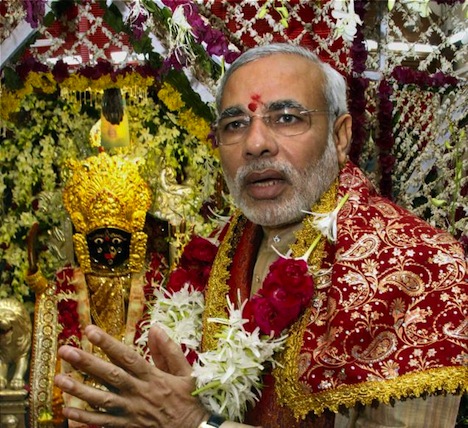Narendra Modi’s strongest argument in his quest to become India’s next prime minister is the record of economic growth in Gujarat, where he has served as chief minister since 2001 — and the promise that Modi can unlock the same kind of growth nationally. ![]()
There’s no doubt that Indian GDP growth has slowed — despite bouncing back from the 2008-09 global financial crisis with 10.5% growth in 2010 on the strength of a surge of investment in the developing world, India has struggled with much lower growth over the past three years. That’s one of the reasons that the governing center-left, governing Indian National Congress (Congress, or भारतीय राष्ट्रीय कांग्रेस) is so unpopular as it tries to win a third consecutive term in India’s April/May parliamentary elections.
But what is the ‘Gujarat model’? Can Modi really claim that his government’s policies are responsible for the superior Gujarati economic performance?
What’s more, even if Modi’s claims do hold up, is the Gujarat model so easily replicable that he will be able to implement nationally in the likely event that he becomes India’s next prime minister?
Though Modi and his center-right, Hindu nationalist Bharatiya Janata Party (the BJP, or भारतीय जनता पार्टी) lead polls in India’s election campaign, the answers to those questions will determine the success — or failure — of any future Modi-led government. Continue reading What exactly is the ‘Gujarat model’? And can Modi export it nationally?
